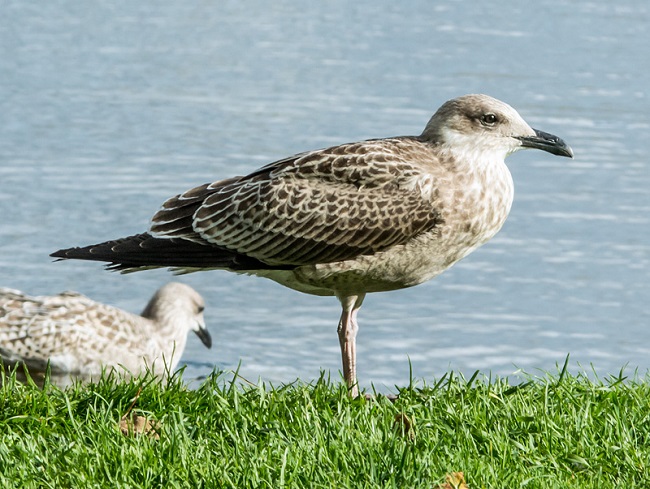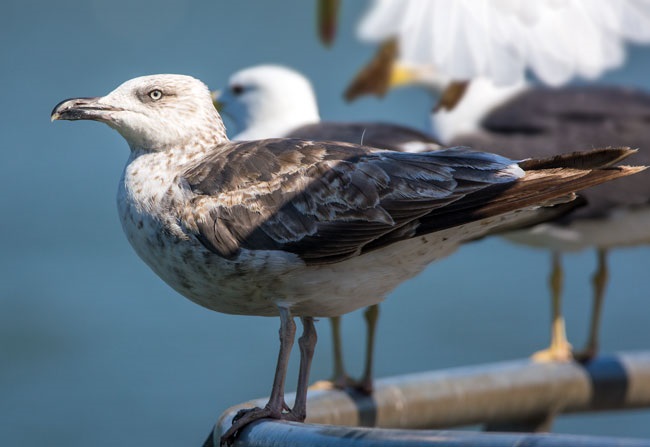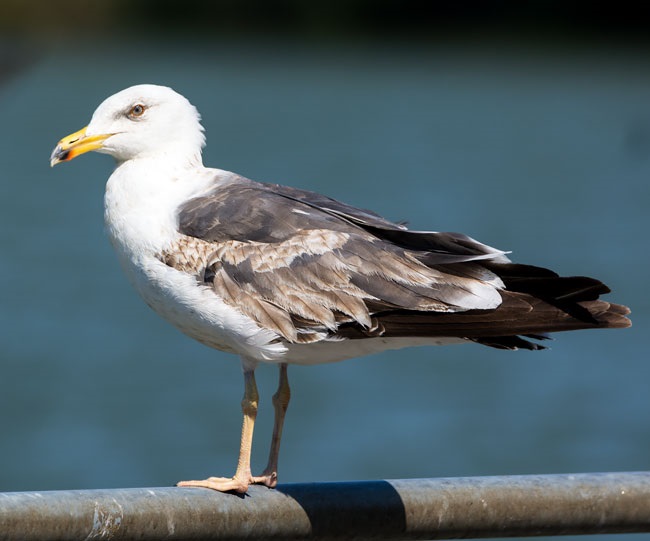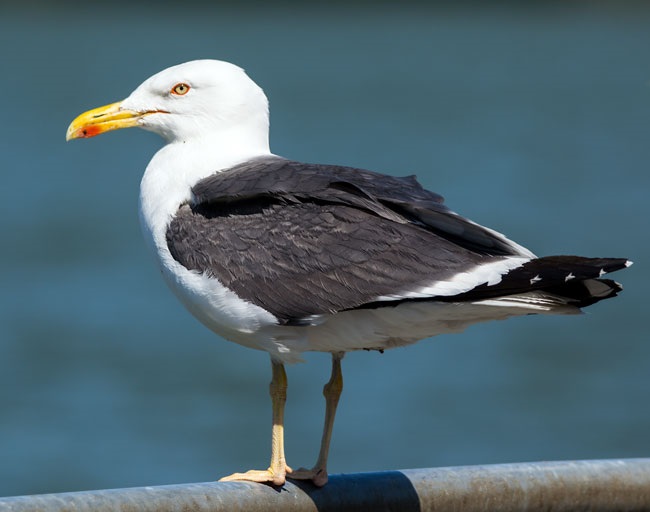
Examples below are all Lesser-blacked Backed Gulls but the "cycles" are true for all gulls Immature gulls come in a perplexing variety of plumages which makes identification difficult. A large gull takes four years to mature, usually divided into 4 plumage "cycles". First cycle is from fledging to its first birthday.  Second cycle is from first to second birthday.  Third cycle is from second to third birthday.  Fourth cycle ends in the spring of the bird's fourth year.  During each cycle, the bird moults all of it's body feathers twice and all of it's remiges ( flight and tail feathers ) once. By the end of this process, the bird has a full set of adult feathers. It will moult and replace these feathers for the rest of it's life - twice a year for body feathers and once a year for flight feathers. Moulting takes place gradually over several months as the bird can't afford to ever be without a functional set of feathers, especially, the flight feathers. There are other changes in the bird as it ages, such as changes in beak and leg colour. Methods of identification of gulls in general use plumage colour and pattern, beak and leg colour. |